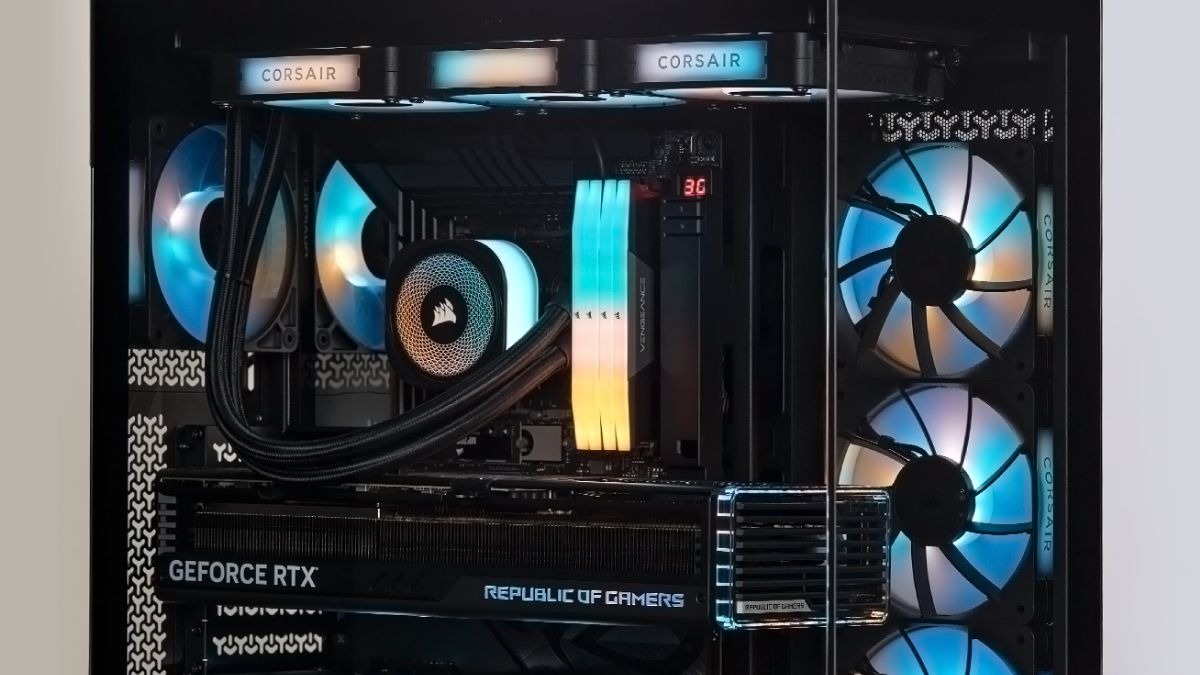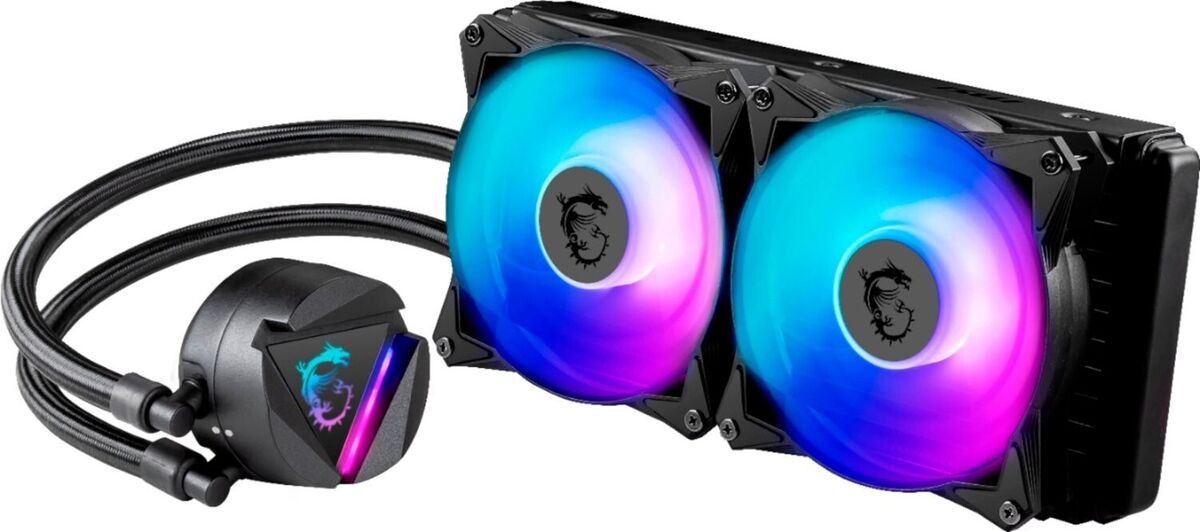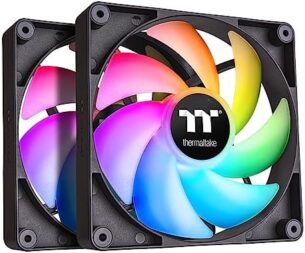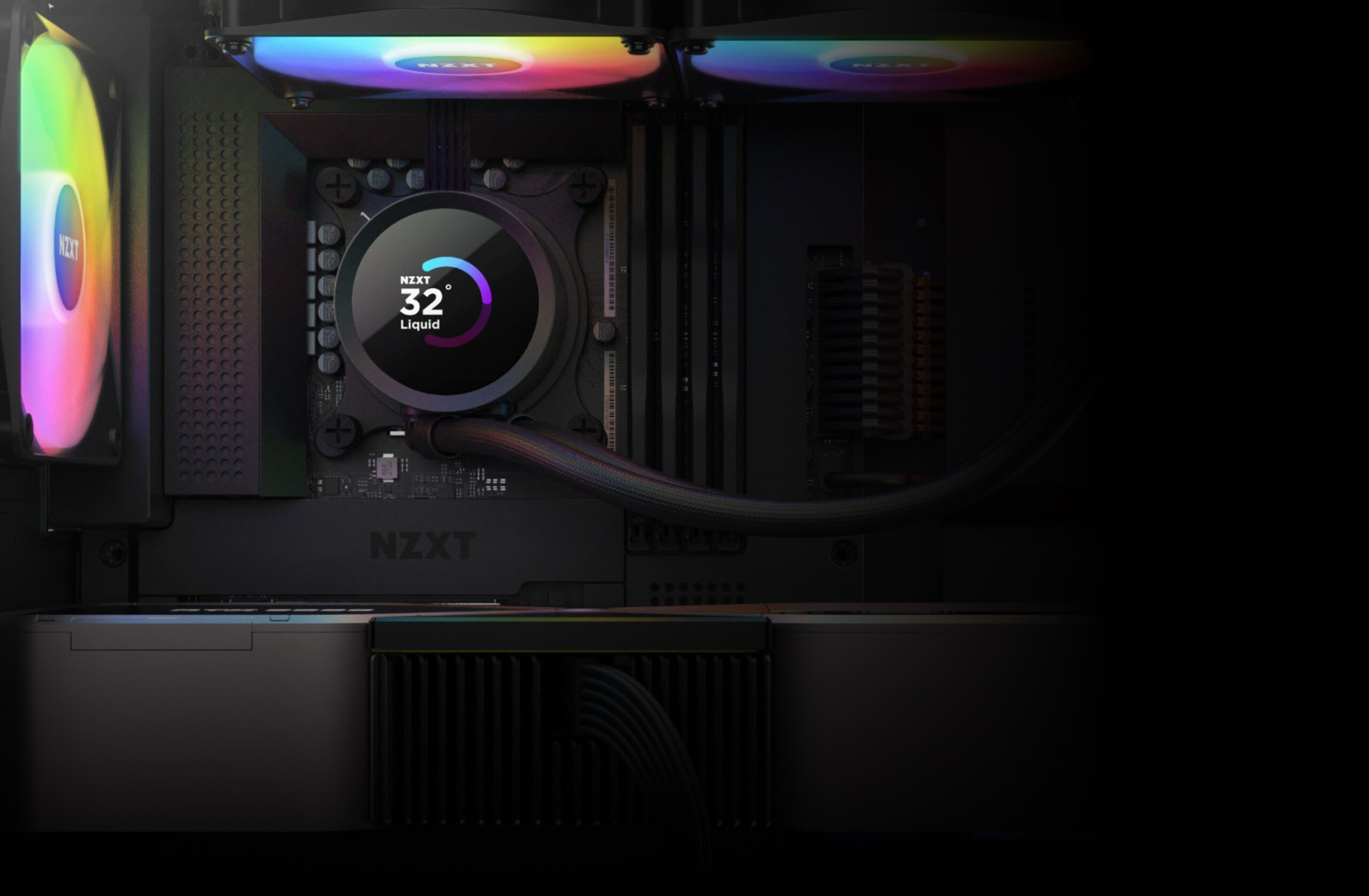
One of the unsung heroes of your computer these days are PC fans or CPU coolers. If you use your rig for a lot of really intensive tasks like processing or graphic rendering, the PC Cooling system will be working tirelessly to ensure your computer does not overheat. This protects the longevity of your components. In other words, it’s a crucial part of your computer’s overall performance.
When looking for the right cooling solutions for your computer, you’ll have to make a few decisions and consider compatibility. Think about the size of the cooler, compatibility with your CPU, and whether it works with your other components.
In this guide, we’ll delve into compatibility broadly as it applies to PC fans and cooling as well as how you can make sure you’ve picked the right solution for your computer.
Understanding cooling compatibility basics
Cooling compatibility comes down to finding the right sized and proper cooler for your computer. Just like finding a good portable home cooler (like a mobile Air Conditioner,) you’ll have to think about some of the factors surrounding the right cooling fit for your PC. Some of these considerations include:
- Tower Size and space available: Your cooling solution needs to be able to fit into your tower and fit around both the motherboard itself and the components closeby and connected to the motherboard. You’re looking to cool down some of those components that run hot, like your CPU, RAM and GPU, so they need clearance and airflow. Ensure you consider this and plan accordingly.
- Power Considerations: Depending on the cooling solution you’ve chosen, you’re likely to need a beefier Power Supply Unit (PSU) and have to make sure that both that PSU and the motherboard can support the needs of the cooling solution.
- Type of Cooling: If you’re considering a liquid cooling solution with a radiator, ensure you have enough space in your case for it. Radiators come in various sizes, so measure the clearance in your case accordingly to its designated placement.
Practical tips for selecting the right cooling solutions
How to ensure all components will fit
Just like buying a new car, the largest and fanciest options out there are always cool, but if they don’t fit in your garage, you might be in trouble. Thankfully, with PC cases, if you’ve bought something too large, you COULD always buy a bigger case. If that isn’t an option, here are a few things to keep in mind as you look to add new cooling to your system:
- Size and fit in your existing case: Make sure you line up your cooling choice with the motherboard’s form factor and case size. If you’re looking at a liquid cooling solution, you’re also going to have to factor in fitting a radiator (which can be different sizes and thickness based on the model you’re looking at.) This will be discussed more in depth later in the guide.
- CPU and Motherboard fit: You’ll always need to make sure that the cooler you’re looking at is compatible with many components on your computer, but the motherboard and CPU are among the most important. Larger fans will require more real estate inside your case and if you aren’t careful and haven’t measured up properly beforehand, run the risk of blocking out things like PCIe slots. This will also be discussed more in depth later in the guide.
- GPU and PSU clearance: Ensure that your build has enough clearance for your cooler if you are adding extra GPU and PSU hardware. This consideration is crucial for all fans, especially for liquid cooling, depending on the radiator’s placement.

Matching your cooling solutions to your system’s needs
Here are a few things to keep in mind as you figure out what the best PC cooling type is best for you, along with some of the common pitfalls to avoid along the way:
- Air (PC case fans) vs. Liquid cooling: You have two popular cooling options to choose from. Air Cooling uses traditional fans. It’s cheaper and easier to install but can block motherboard slots. Liquid Cooling offers better performance at higher temperatures but costs more, requires a small radiator, and there is a risk of leaking.
- PWM vs. DC Fans: PWM (Pulse Width Modulation) fans offer better cooling control than traditional DC (Direct Current) fans. These are more common in high-end cooling systems, especially powerful liquid coolers.
- Thermal Design Power (TDP) rating: Each cooler option has a TDP rating that indicates how well it dissipates heat, measured in wattage. Rigorous product testing assigns these TDP ratings to help you understand the cooler’s performance. Choose coolers with TDP ranges above your requirements to buffer for temperature changes (from the computer or even your room during different seasons) and to future-proof yourself.
- Maximizing Airflow: It’s one thing to install your cooler but it’s another to ensure air is escaping properly. With your air cooling solution, make sure you have balanced your intake and exhaust in the right places so that air escapes and you can avoid any sort of loop or trap. With a liquid cooler, make sure the radiator isn’t blocked and is somewhere that it can vent properly. Many fan models will have arrows to help guide to tell you the airflow direction.
- Cooler Noise: Additional cooling does create additional noise. Check the noise ratings for any coolers you’re looking for if this is an important factor for you. Some fans do have noise dampening features built in.

PC cooling and CPU compatibility
Thankfully, even for a fairly new PC DIYer, gauging PC Cooling with your CPU’s compatibility isn’t very hard to do. In fact, you just need to check the socket type of your CPU (typically found on the motherboard’s manual or the CPU itself) and verify that the cooler you’re looking at matches up with it and it comes with the right mounting brackets. It’s as simple as that. If you don’t have a perfect match, you’ll need to keep looking until you find the right fit.
Ensuring the CPU cooler fits your CPU and provides adequate cooling
Along with the mounting brackets and physical fit, there are some other things you must consider while looking for the right PC Cooling solution. You do need to make sure that your cooling provides enough space that it doesn’t interfere with anything else on your motherboard. If you’ve purchased large cooling, you have to be careful that it doesn’t block out things like your PCIe ports. Having a top of the line cooler for motherboard and GPU won’t be any good if you can’t even plug the GPU in!
Every cooler in the market these days comes with a TDP (Thermal Design Power) rating. This rating shows how efficiently the cooler can dissipate heat. This is crucial because it helps you decide if a cooler suits your needs. For example, if you plan to overclock your computer, get a cooler with a high TDP rating. It should handle or exceed the heat generated, especially by the CPU. If your cooler can’t manage the heat, your PC and components will throttle and wear down faster.
That’s why pairing the right cooling and CPU are important and why you see successful pairings like a Intel Core i7-13700K processor being cooled successfully by NZXT Kraken X63 Liquid Coolers and many modern AMD Ryzen Processors working well with Corsair Liquid Cooling. Granted, these aren’t the only models that are compatible with each other, but they’ve been proven to work well with each other.
There are dozens of cooling options available, and even if the one you prefer isn’t a perfect fit, the right one should be easy to find.
PC coolers and Motherboard compatibility
Finding the right fit for your CPU
As said earlier in this guide, mounting brackets are an extremely important part of ensuring your cooling choice properly cools your CPU. Once you’ve determined that your cooler is properly compatible, it should come with the right mounting hardware to cooperate with the CPU socket. Without it, you run the risk of improper cooling or improper function.

Some motherboards feature large RAM or VRM heatsinks that can hinder cooler operation. Choose low profile RAM to avoid this issue and verify if the cooler’s mounting hardware provides enough space for the VRM heatsink to breathe, especially if the fans can’t be adjusted in size (though some models can). Additionally, certain coolers require extra installation steps, such as attaching backing plates. Always double check the manufacturer’s website to ensure compatibility with your motherboard.
Adjusting BIOS settings for optimal cooler performance
There could be some customization capabilities within your motherboard’s BIOS to change fan settings. You may be able to monitor the core temperature or adjust fans to perform differently. Some BIOS settings allow you to toggle fans on and off automatically if the temperature is low. There may also be controls for your cooler’s PWM mode. If you plan to overclock, you might have a backup alert if temperatures spike too high. Regular alerts could indicate that your cooler needs cleaning. Check farther down this guide for more details about cleaning.
PC cooling and case compatibility
Your existing PC case plays a crucial role in the compatibility of your new cooling solution. The space your cooling solution needs might not fit in your current case. It may be too big, or there may not be enough clearance to safely mount it with your motherboard and components. If you have a liquid cooling solution with a radiator, be mindful of its size and placement in your case.
The Importance of Airflow
Once your new PC cooling is in place, you must ensure proper airflow and heat dissipation. This includes removing unnecessary clutter inside your case. If you need extra cooling, you’ve likely bought a modular power supply unit, allowing you to remove unneeded cables. Ensure attached cables impede airflow as little as possible. Proper airflow and heat escape are vital to maintain your computer’s temperature. You can buy cases designed to exhaust heat, but ensure you leave space outside the case for heat to escape. Directing airflow toward hot components while allowing hot air to escape is key to optimal cooling and hardware longevity.
As with most of the future-proofing solutions discussed in the PC Builder Buying Guide, there’s nothing wrong with future-proofing by picking a case and cooling that exceed current needs. This ensures you’re prepared if you upgrade and need more later.

Installation and setup tips
As we’ve discussed many times, proper placement is crucial for your cooling solution’s efficiency and the wellbeing of onboard components. Choosing the right cooling solution is important. Keep these things in mind during installation.
- Make sure you’ve used the right mounting brackets and that you’ve managed the fan’s airflow directions properly
- You’ve followed directions to properly install your cooler to the right connectors on the motherboard
- Any loose cables aren’t impeding your fan’s ability to expel air
- Avoid over-tightening any screws and apply equal pressure across all brackets and clips. You don’t want to risk cracking or damaging anything from applying too much pressure.
- If using liquid cooling, position the radiator as recommended for optimal performance. Ensure it can vent and exhaust heat properly. If mounted near another component, avoid exhausting onto it.
- If your cooler requires thermal paste (some come with it pre-applied), apply the specified amount.
Keep in mind that while your PC cooling will do its best, it will collect dust over time. This will slow down performance, especially if you live in a dusty area or have pets. It’s recommended to clean your PC every 4-6 months. You may need to clean it sooner if your fans aren’t working well or are noisier than usual. If you see a lot of dust, it’s time to clean. Ensure you turn off your computer and disconnect all cables before cleaning. Compressed air is a good start, but you can also remove fans and heatsinks to clean them separately.
Naturally, if you need help during this process, you can always give Geek Squad a call for remote support or visit in store.
Making the coolest choice when things get hot
There are many factors in finding the right PC cooling. Besides choosing between air and liquid cooling, ensure everything fits inside your case and doesn’t interfere with other components. Managing airflow is crucial, and proper care and maintenance are essential for optimal performance. Hopefully, this has given you a good foundation about compatibility. To figure out the right cooling solution for your needs, check out the PC fans and cooling buying guide. If not, check out our PC Components buying guide to help you learn more about everything for your PC, from the case all the way to the CPU!
Click here to see all the articles in the “PC Builder Lab” series.
Upgrade your setup today and experience unparalleled performance! You can find all the PC components you’ll need, including all sorts of cooling solutions, at Best Buy.







